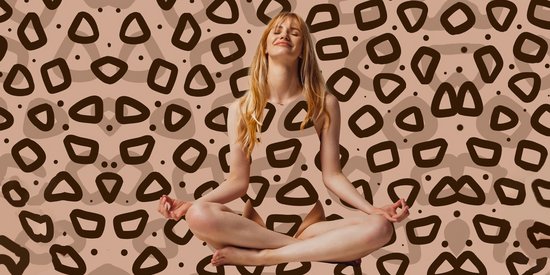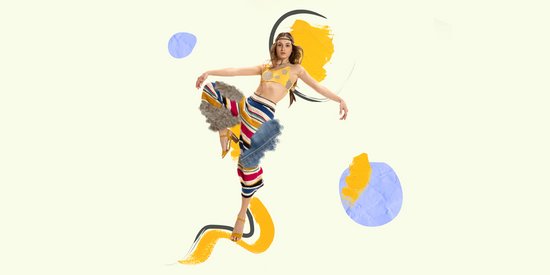The importance of meditation
According to research carried out in 50 different countries around the world, meditation improves intelligence, creativity, perception, and gives a sense of order. It reduces stress, hypertension, anxiety, drug consumption; It can reverse the aging process, transforms breathing, promotes deep relaxation, increases productivity, restores cheerfulness, and builds confidence and self-confidence. Being an integral part of the Ayurvedic way of life, meditation provides good health on all levels, not forgetting the spiritual level.
Give yourself a moment of relaxation; fight against stress, depression...The benefits of meditation are numerous.
What is meditation? Is this a technique that can be practiced? Is it an effort to do it? Is this something the mind can do?
It is not always easy to know where to start when beginning to meditate, even when you are fully aware of the benefits of this discipline. Rest assured, with a good method, it is relatively simple.
This is why the Womensdestiny editorial team offers you two simple methods taken from the best meditation guides in the world.
- "On Self-knowledge", Le Courrier du Livre editions.
- Krishnamurti in his book "Answers on education"
- Meditation does not aim to achieve a particular objective (such as muscle relaxation for example), but corresponds to a method of being open to the experience of the moment, whatever it may be, without seeking to modify it.
However, meditation techniques aim to transform the mind, without the need to practice them in a religious setting.
It is a practice that helps cultivate and develop certain basic human qualities.
"Meditation is the art of knowing how to be alone. And love is the art of knowing how to be with people, the art of being with others. But meditation comes first. "Tishan*
Some meditation techniques and simple tips for learning to meditate:
The 4 most common types of meditation are: Vipassana meditation, Transcendental meditation, Zen meditation and Mindfulness meditation.
Meditation is your intrinsic nature - it is you, it is your being, it has nothing to do with any of your actions. The empty mind no longer has any thoughts that disturb it.
At first, it's hard not to think about anything, but with practice you will be able to achieve this. This is an excerpt of the book "On Self-Knowledge", from the Courrier du Livre edition
Krishnamurti’s corner stone; self-knowledge is the first form of meditation, the unique pathway to wisdom. So the beginning of meditation is self-knowledge, which means being aware of every movement of thought and emotion, to know all the layers of one’s consciousness - not only the superficial layers, but the hidden, the secret and deepest inner activities. But to know the deeply hidden activities, secret motives, responses, thoughts and feelings, you have to have the tranquillity in the conscious mind; that is to say, the conscious mind must be still to receive the projections of the unconscious. The superficial mind, the conscious, is busy with its daily activities: making money, fooling people, working, avoiding problems - all the daily activities of our existence. This superficial mind must understand the true meaning of its activities and, in doing this, introduce tranquillity to its being. It cannot bring calmness, stillness, through a recording, through stress, or by discipline. It can only achieve tranquillity, peace, calm, through understanding its own activities, by observing them, by being conscious, by seeing its own severity.
Here are two simple methods proposed by Krishnamurti in his book "On Education" to make an easy start to meditation, simply by observing your own thoughts.
1. To learn to meditate, start by observing how your mind works, your spirit. Sit in a meditation posture, a comfortable position for you. Close your eyes and watch these. Can you keep your concentration on them? The stillness of the eyes is important in meditation. Keep your eyes completely still if you can. Then observe your thoughts without following them, how they move from one thought to another. See what you think of your thoughts, but do not interfere with them, do not hold any thoughts, let them go. Simply observe. Do not correct anything. Just let go and enter into meditation mode.
Do this at bedtime, during your walks ... and you will be at the start of a meditative state.
2. Take a seated position, be calm, quiet, relax. Then look at nature around you, look at the trees, the flowers, the sky, the sea, a hill ... depending on where you are.
Observe the colours, the shapes, the shadows ... look with your eyes, do not think, just observe.
Then after having observed outside, go inside of yourself. Close your eyes. In the same way which you observed what was going on outside, now watch what happens inside. Do not think, just observe. Again, keep your eyes motionless, they have nothing to look at! You watched everything around you externally, now see what happens in your mind. Stay calm….
As you practice, you will become more sensitive to the presence of everything within you and around you.
Prerequisites required: The Desire and the Decision
To learn how to meditate, we must first decide that we want to do so. Choose a time and place free from distraction. Allow at least 45 minutes to practice this discipline every day.
The Benefits of Meditation
When meditation is practiced correctly, you can begin to feel the first benefits after 2 to 3 weeks. A deeper inner transformation takes place within a few months of practice. The benefits resulting from the regular practice of meditation are numerous and they have been proven by thousands of scientific studies over the centuries.
According to a study published in the journal Frontiers in Psychology, meditation can be of real benefit to our brains.
Meditating is not learned by reading on the subject, but by practicing it.
During the session, it is best to wear loose clothing, not too tight at the waist or the hips.
Learning to breathe: the basis of meditation
Exercises for deep breathing;
-Lie on your back
-Place one hand on your abdomen and the other on your chest. This will help you to give you greater understanding, and help you feel what is happening in each stage of the breathing process.
-Exhale as deeply as possible, emptying each space:
- the lower level or abdominal ( at the tummy)
-the middle level or thoracic ( at the chest)
-The upper level or scapular (at the shoulders)
-Then, inhale slowly through your nose by first filling the abdomen which should, like an inflatable balloon, push up your hand. When your stomach is full, continue to breathe in further, to fill your chest while still maintaining the air in your belly. Then, relax your shoulders and also fill them with air.Try to hold this for a few seconds.
-Then exhale slowly, holding the air in your belly as long as possible until this last release from there.
-First empty the air from the shoulders, then the chest and finally the abdomen.
"Since ancient times, spiritual masters of all types of traditions have indicated the Present as the key to the spiritual dimension"
*Eckhart Tolle







